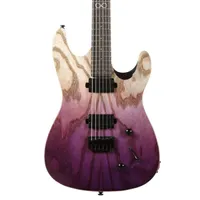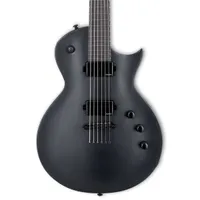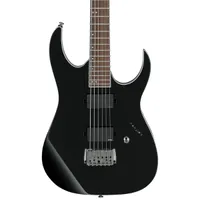Best baritone guitars 2025: pick up the slack with these long scale guitars
Get low with my expert pick of the best baritone guitars from PRS, Gretsch, Chapman, Jackson, and loads more
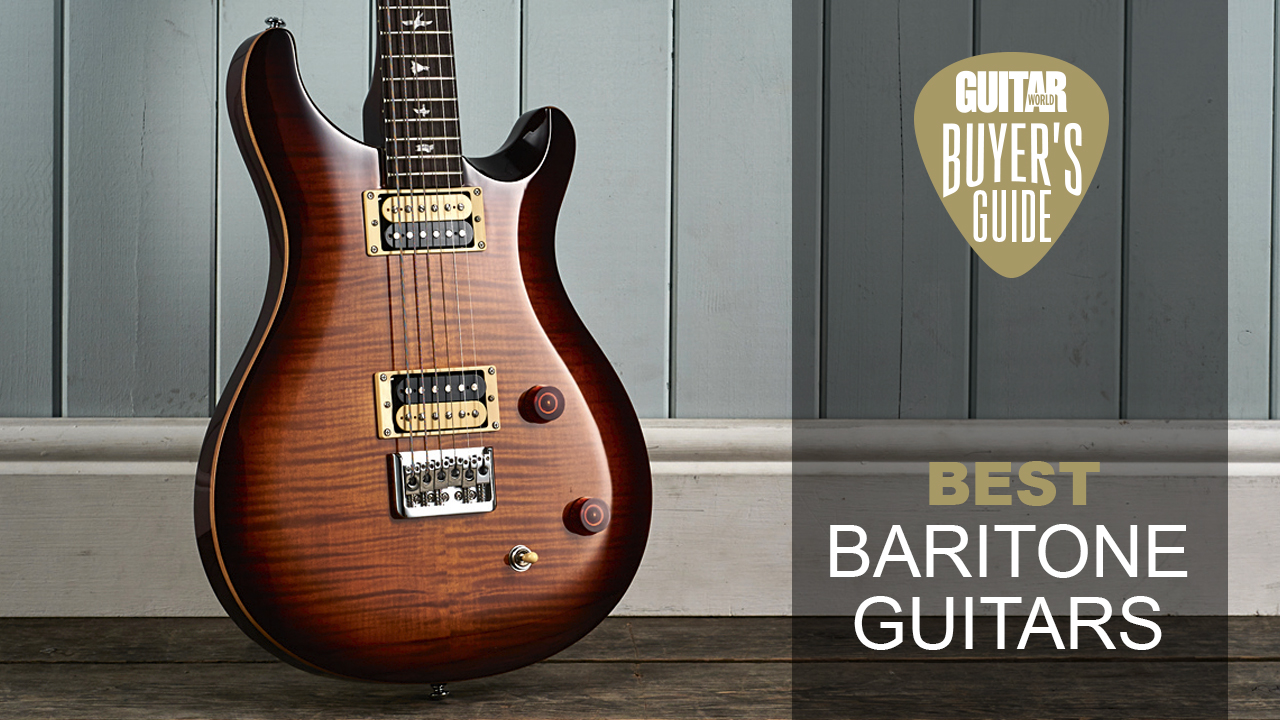
Over the last few years, partly due to the rise of new nu-metal and everything 90s/early 2000s, I've seen a big increase in the number of guitarists playing long-scale guitars. The best baritone guitars offer a more stable way to get ultra-low tunings for modern metal if you don't fancy a 7 or 8 string, or just open up a new world of tones without having to relearn all your chords and scale knowledge
I own a couple of baritones and have been playing them in a band for the last few years, so I've got a good experience of what they're like to live with, and what their pros and cons are. A baritone guitar can be pretty hard to get your hands around at first thanks to that extra space between the frets, but if you persist you'll find they offer a really rewarding playing experience.
If you're not planning on tuning lower than B, then a baritone guitar probably won't be worth it for you. However, if you're the type that wants to hit the low tones of G and F, or even down a whole octave to E again, a baritone allows you to do just that without getting any horrid floppy string action. Typically tuned BEADF#B, baritone guitars feature an extended scale length, placing them somewhere between a regular guitar and bass guitar, which is what allows for lower tunings with stable string tension.
Baritone guitars still aren't all that common despite becoming more popular, so if you want the very best all-rounder, I reckon you should go for the PRS SE 277. It can do everything from modern metal to surf guitar and is brilliantly put together. If that's too pricey for you, check out the Squier Classic Vibe Baritone Custom Telecaster, which gives you those sultry low tones for a lot less.
If this is going to be your first baritone guitar, then I'd highly recommend checking out our FAQs section which has loads of common questions answered by myself the experts here at Guitar World. If you just want to see the best baritone guitars available right now, then keep scrolling for my top picks.
My top picks
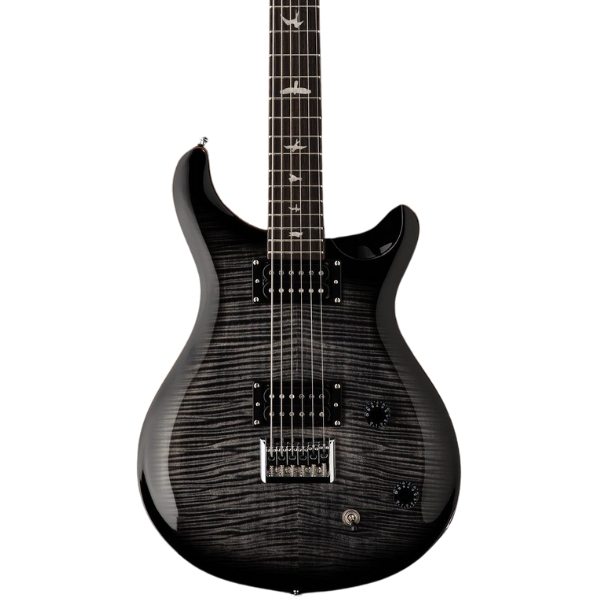
A guitar that amply covers all the bases as a standout baritone electric, the PRS SE 277 can shoulder the heaviest tones yet clean up nicely, with a coil tap for single-coil twang once you tire of splitting the atom with high-gain madness.
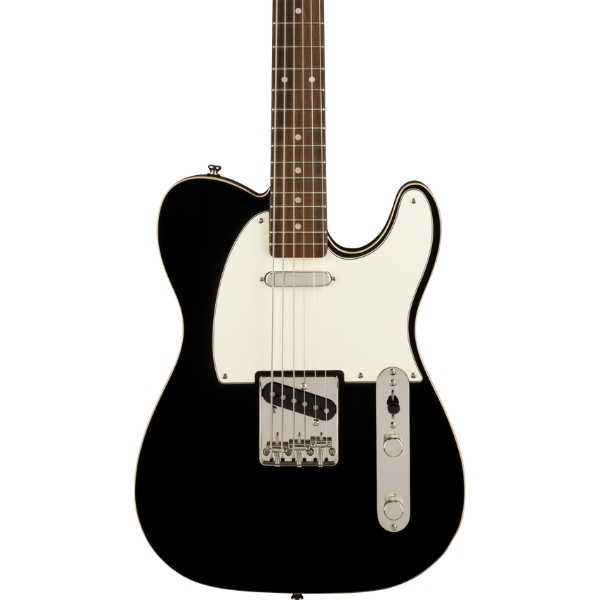
If you want low tunings on a budget, we'd go for the Squier Classic Vibe Baritone Custom Telecaster. It's more geared towards rock tones but don't let the vintage look fool you, you can get some properly heavy tones with that Tele bridge pickup.
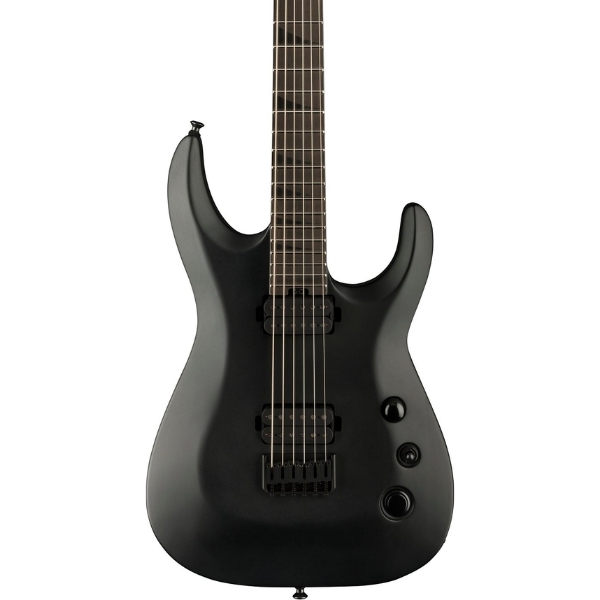
If you want to get super heavy, the Jackson Pro Plus XT Soloist should be your go-to. It's packing two Seymour Duncan humbuckers, 24 stainless steel frets, a compound radius fretboard, and an arcade-button style kill switch.
Best overall
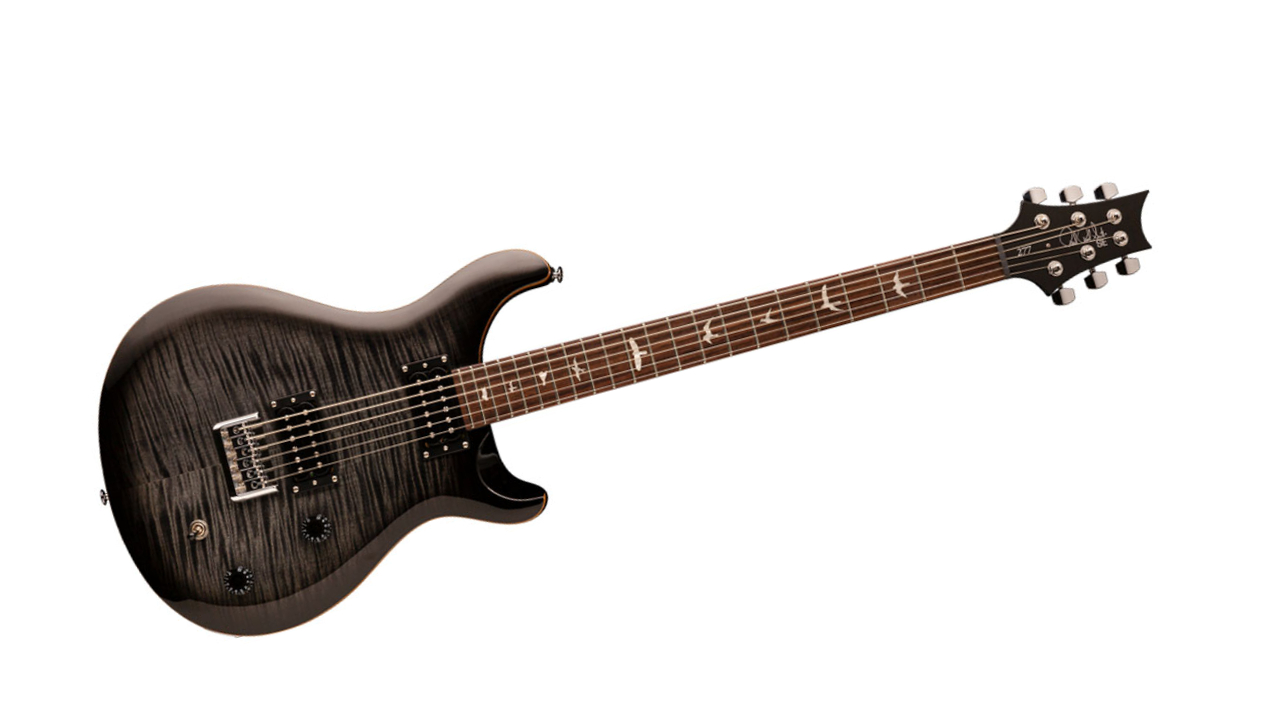
1. PRS SE 277 Baritone
Our expert review:
Specifications
Reasons to buy
Reasons to avoid
The PRS SE 277 is the perfect example of a baritone electric that can be used for metal, picking up where the Mike Mushok SE model left off. That said, it’s similarly at home in more relaxed settings, with your slippers on and the gain dialed back, picking through jazz chords or simply giving new range to your compositions.
This electric baritone guitar is very much what you make it. Tuned to B, with its 27.7” scale (hence the name), the PRS SE 277 will lean its slab mahogany and maple veneer shoulder into bruising riff-work you need it to.
That push/pull coil-split also enables you to open up the quite excellent PRS 85/15 S humbuckers to a wider world of musical potential. Yes, spaghetti western or old-time rock ’n’ roll twang is available as a side-order to down-tuned chug.
After considering the impeccable build and finish, its perfect balance, classy aesthetic and reasonable price, the PRS SE 277 makes a very convincing argument for being the best baritone guitar on the market.
Best budget

Specifications
Reasons to buy
Reasons to avoid
The Telecaster has always been a fine choice for the six-string rebel, but this budget Squier Classic Vibe Baritone Tele, with its 27” baritone scale, dressed in black with single-coil pickups, really takes it to the next level.
Its appeal lies in taking the simplicity and enduring appeal of the Telecaster design – rarely matched, never beaten – and offers a clever variation on a theme. And while the Baritone Custom Tele guitar looks achingly cool, everything here is designed with sheer practicality in mind.
Check out the string-through-body bridge design with its three saddle bridge to give you plenty of that classic Tele twang. The pickups are Fender designs and do an excellent job of articulating that low end without losing detail and mushing out.
You could use this for downtuned punk and grunge, but through a clean amp with a little spring reverb and slapback echo, you’ll find this is the best baritone guitar if you want a rock ’n’ roll machine with a nigh-on oceanic depth to its voice.
Best for metal
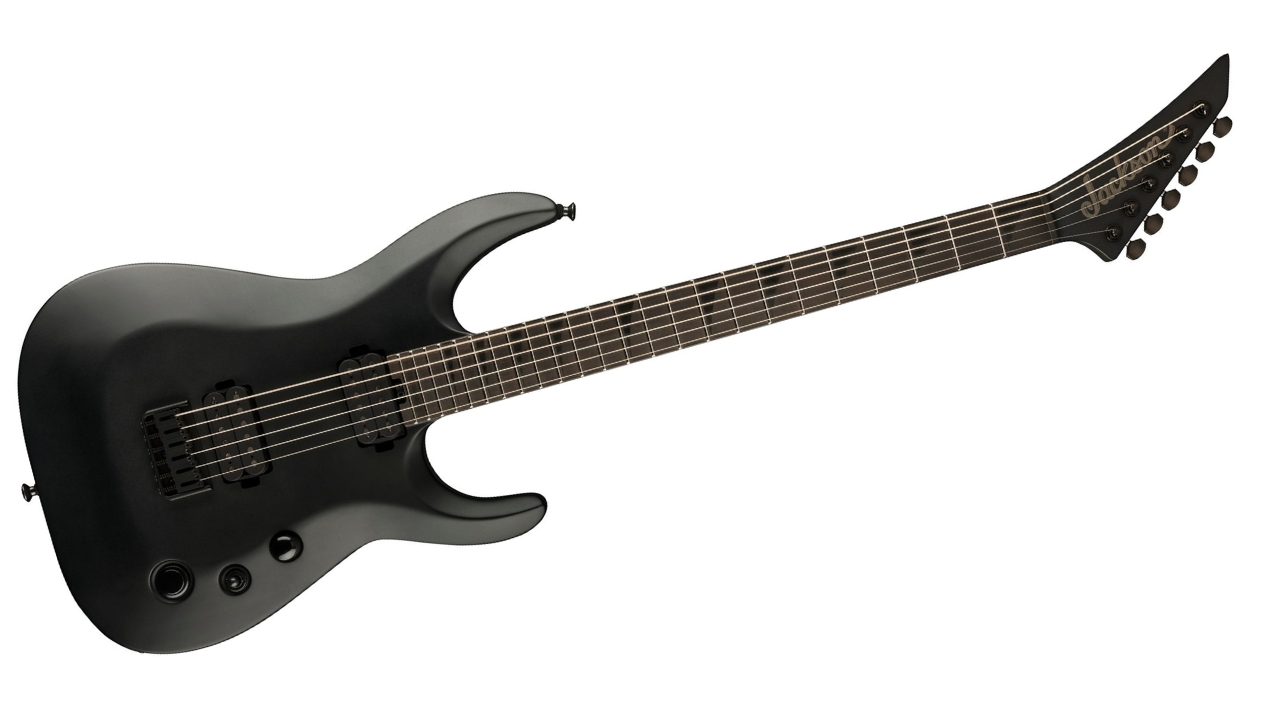
Specifications
Reasons to buy
Reasons to avoid
If you're looking for a proper modern metal machine, the Jackson Pro Plus XT Soloist will let you get low without you having to adjust to an extra string. Coming tuned in B-standard out of the box, with the addition of some thicker strings you can take this guitar super low.
A pair of Seymour Duncan Nazgul/Sentient humbuckers provide all the high-gain tones you'll need for chugging and shredding. We love the addition of the arcade-style killswitch too, great for adding some stutter effects to those dissonant chords during a heavy breakdown.
Playability-wise wise it's an ultra-fast neck as you'd expect from Jackson, with a compound radius that flattens out the higher up the neck you get. It means you get that shred playability to go with easy riffing and fretting of chords. It isn't the longest scale out of the baritones here, but it will take some getting used to if you're used to a regular scale guitar.

"With a fresh set of strings on, the Pro Plus XT really does deliver that modern metal sound. The Nazgul bridge pickup paired with a high-gain amp has plenty of sizzling heft for getting those djent tones or searing leads. The more vintage spec of the Sentient neck pickup is slightly tamer, making it great for clean passages, although I wouldn’t say it’s quite in PAF territory."
Read more: Jackson Pro Plus XT Soloist SLAT HT6 Baritone review
Best for rock
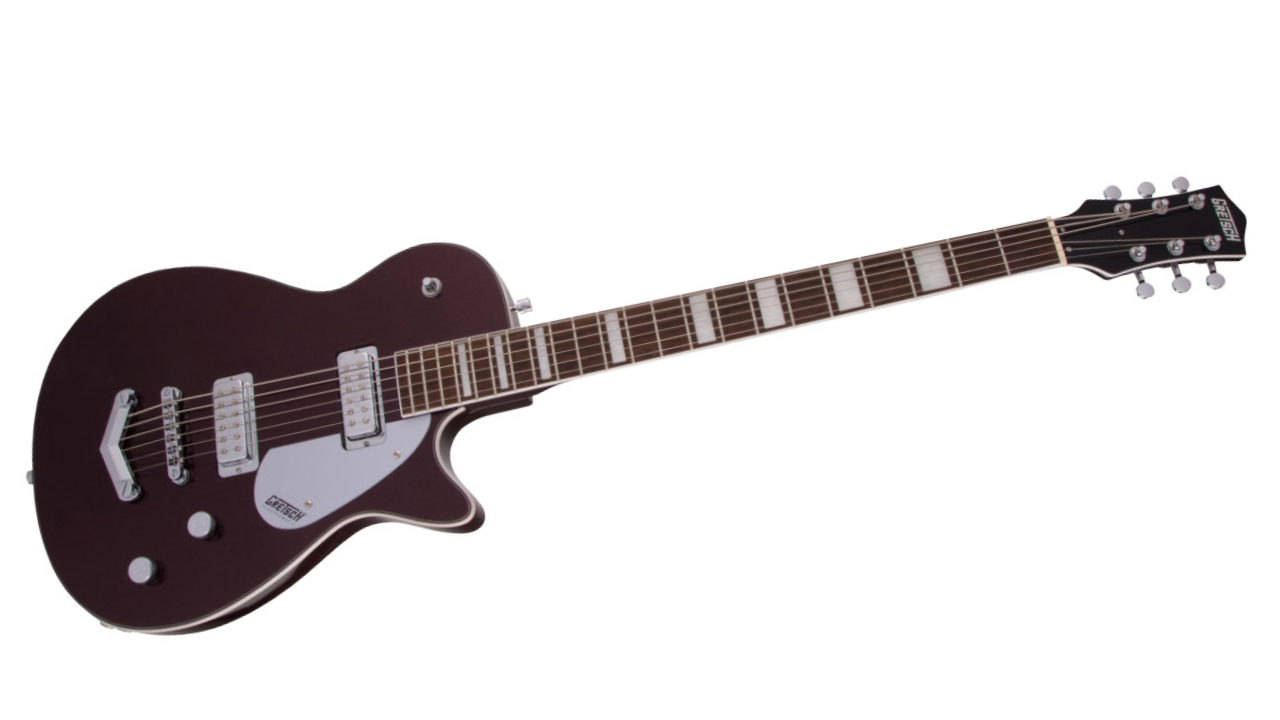
4. Gretsch G5260 Electromatic Jet Baritone
Our expert review:
Specifications
Reasons to buy
Reasons to avoid
Playing a Gretsch always offers welcome respite from modern life and the G5260 Electromatic Jet Baritone Guitar is no different. It has the classic Jet silhouette, the G-Arrow chrome controls, the choice between V stop-tail or licensed Bigsby vibrato. And yet, this is Gretsch for playing gigs in the uncanny valley, for there is just so much guitar.
For some, the nigh-on 30” scale length and slab mahogany build makes the Gretsch G5260 is a considerable lump of wood to wrap your arms around, but that neck profile is very comfortable. Once you adjust to all that extra fretboard runway (really, it’s like a short-scale bass), the G5260 is a really fun ride.
Play it through a small Fender tube combo, generously sauce with spring reverb and you’ll be riding the waves of deep surf tone in no time. Dial in slapback and it’ll yield a sonorous rock ’n’ roll voice that’s so darn mean your only concern is that an authority figure will step in and confiscate it. Without question the best baritone guitar for surf rockers.
Best acoustic

5. Alvarez ABT60E
Our expert review:
Specifications
Reasons to buy
Reasons to avoid
There’s a lot to like about Alvarez, most notably the company’s ability to assemble stage-ready, high-quality strummers that sit comfortably in the mid-priced bracket. This electro-acoustic baritone guitar is no exception, but it is quite different from the typical Alvarez electro-acoustic.
On the Alvarez ABT60E Artist Series, we have an extended scale, measuring a hair over 27” and with a nut width of 1.75” positioning it in the comfort zone for fingerstyle players without alienating any flat pickers. With a lower bout measuring over 17” at its widest, the proportions might dwarf some players, but this helps project the extra bass from being tuned down to B.
The Alvarez ABT60E really fills out a mix, making a wonderful counterpoint to an acoustic in standard E A D G B E tuning, and we would imagine doubly so with a 12-string where there would be so much harmonic potential. The LR Baggs StagePro Element is an excellent feature at this price, with a 3-band EQ, notch, and phase control making it a cinch to dial in a live mix.
Best semi-hollow
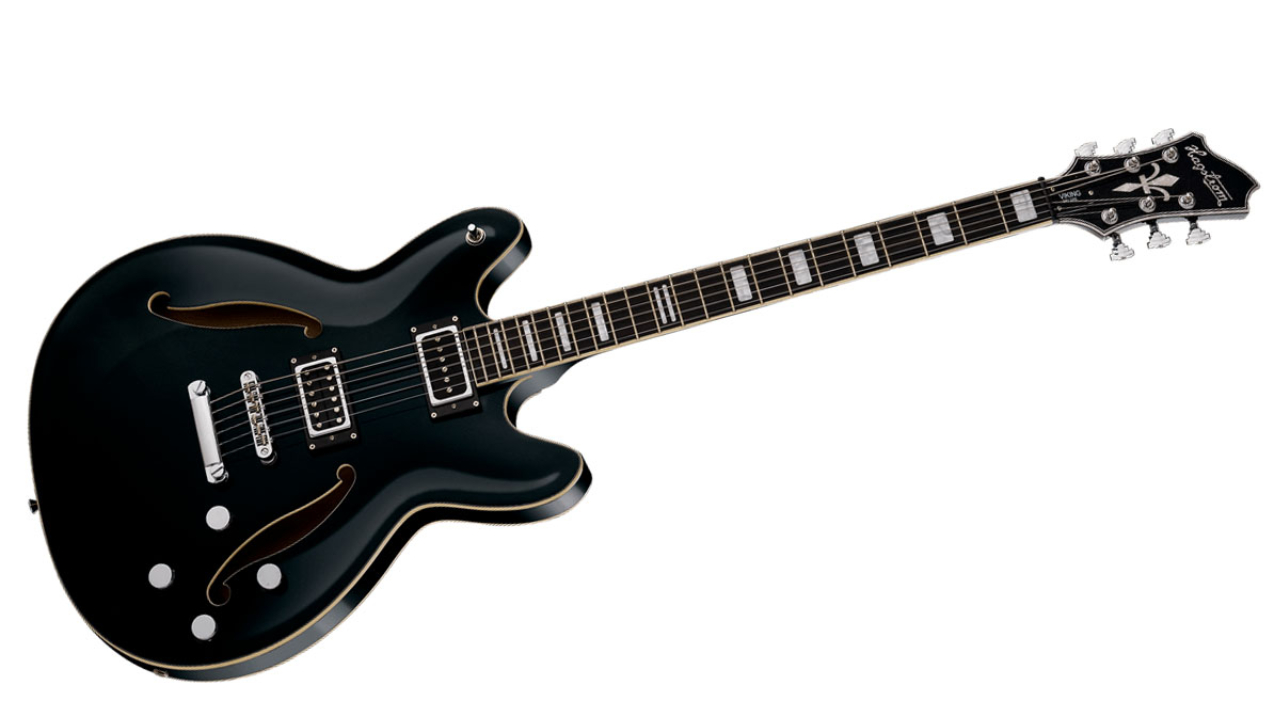
6. Hagström Viking Baritone
Our expert review:
Specifications
Reasons to buy
Reasons to avoid
A semi-hollow ES-style baritone guitar? Why not. The Viking Baritone would make for an excellent head-to-head with the Gretsch G5260. Both are notable for how well they endow a larger-format guitar with all their traditional brand flourishes.
Blindfolded, you could grab the Viking Baritone Guitar by the neck and instantly recognize that slimline Hagström profile, with the Resonator fingerboard persuasively ebony-esque and pleasant to the touch. The inside is semi-hollow but metaphorically it’s solid. It has the long-travel tune-o-matic bridge and stop-tail and 18:1 die-cast tuners keeping the tuning honest, with the H-Expander truss-rod making the Hagstrom neck good and sturdy.
Best of all is the pickup combo, with a humbucker-sized P-Urified P-90 offering warmth with a vinegar-sharp aftertaste of twang, and the bridge position’s Custom 58C, a semi-open coiled humbucker with a vintage-voiced Alnico V magnet. It gives you some of that classic 70s Hagström jazz vibe, plus a clean tone to die for.
Spec comparison
If you're struggling to decide between my top picks, I've put together this handy specification table with all the key features so you can make a direct comparison.
Model | Body | Neck | Scale | Fingerboard | Frets | Pickups |
|---|---|---|---|---|---|---|
PRS SE 277 Baritone | Mahogany | Mahogany | 27.7" | Rosewood | 22 | HH |
Squier CV Baritone Custom Tele | Nyatoh | Maple | 27” | Indian laurel | 21 | SS |
Jackson Pro Plus XT Soloist Baritone | Nyatoh | Maple | 27” | Ebony | 24 | HH |
Gretsch G5260 Jet Baritone | Mahogany | Maple | 29.75” | Laurel | 22 | HH |
Alvarez ABT60E | Mahogany/Sitka spruce | Mahogany | 27.72" | Pau ferro | 20 | Piezo |
Hagström Viking Baritone | Maple | Maple | 28” | Resinator | 22 | SH |
Also consider
For me, the above guitars are what you should be looking at first and foremost. That said I appreciate no two guitarists are the same, so here are some more options you can look at in your hunt for a long scale guitar.
Chapman ML1 Modern Baritone
Alder | Maple | Ebony | 28" | 24 frets | HH
The Chapman ML1 Modern Baritone is a fantastic value riff machine, and arguably the easiest entryway for modern metal guitarists to get into the baritone sphere. It’s incredible value for money considering the spec, delivering everything the modern player needs.
★★★★½
ESP LTD EC-1000 Baritone
Mahogany | Mahogany | Ebony | 27" | 24-frets | HH
The ESP LTD EC-1000 is one of the most popular metal guitars of all time, and this baritone version continues that trend, offering extra low tunings with the stability you need in heavy music. You get a mix of Fishman Fluence pickups, with a ceramic one in the bridge position to deliver clarity and bite. In the neck position, it’s an Alnico pickup for a warmer and more personable tone, great for lead work and clean sounds.
★★★★½
Ibanez RGIB21 Iron Label Baritone
Nyatoh | Maple | Jatoba | 28" | 24-frets | HH
Much of the Ibanez RGIB21 Iron Label Baritone’s DNA dates back to the 1980s, when the RG series blossomed alongside rivals from Jackson and Charvel as the state-of-the-art S-style of the decade. That body shape, with the sharp-pointed horns, the headstock… It’s a dead giveaway. Elsewhere we have a slim-profile maple neck, affixed to the body with four bolts on a tastefully sculpted heel.
★★★★☆
Danelectro 66BT
Alder | Maple | Pau ferro | 29.75" | 22 frets | HS
Look past the eccentricity and you have one of the best baritone guitars for a range of styles – it should stop any indie, alternative or punk players in their tracks. This is yet another baritone that performs a neat trick in having a scale length of just under 30”, but with its C-profile neck and alchemic balance from the reversed body shape it feels manageable and, above all, fun.
★★★★☆
How to choose
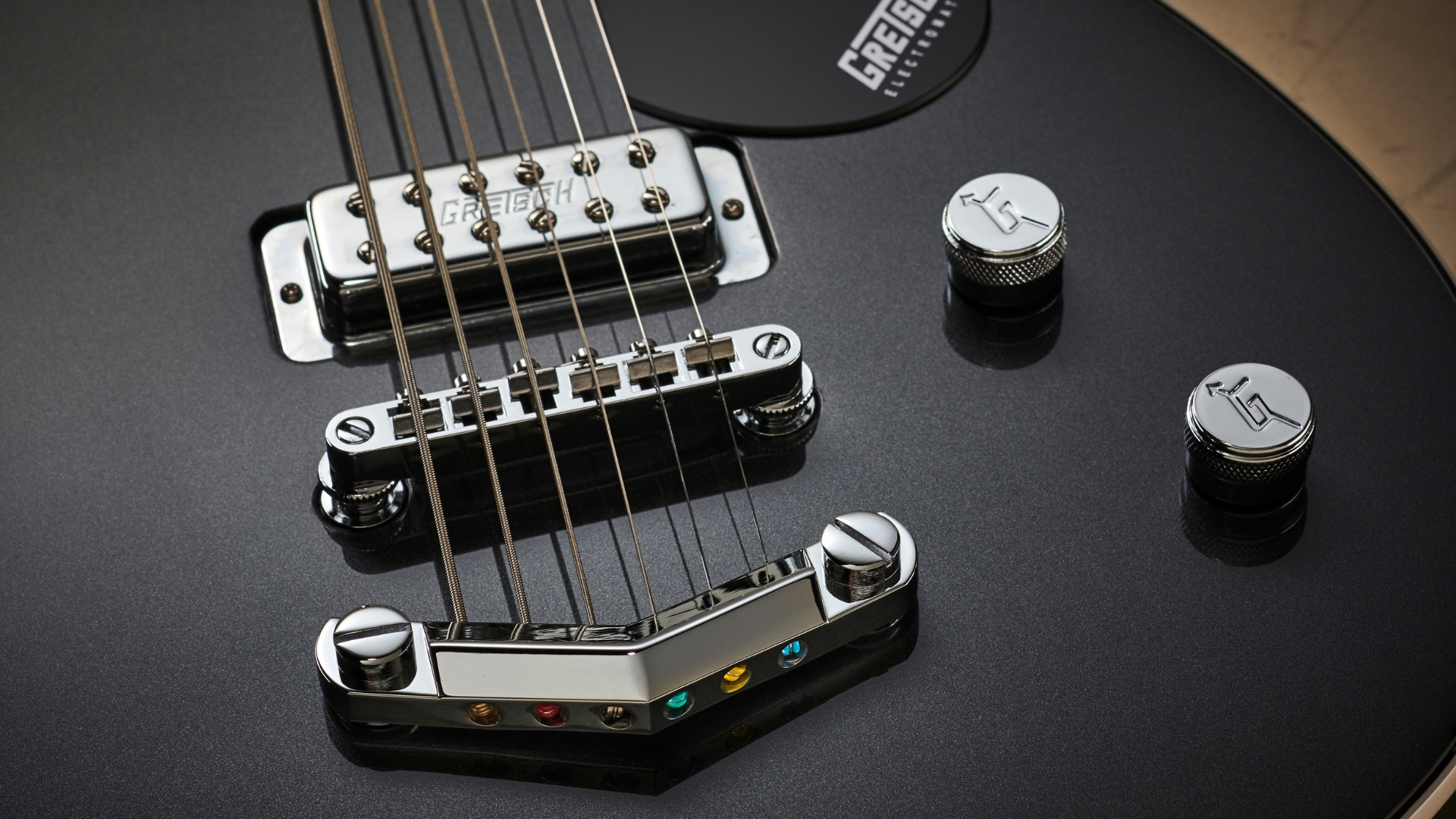
When choosing a baritone guitar, you should consider what it is you want to do with it. In the modern era of guitar, it seems like there are two main types of baritone guitar players. Heavy-inclined guitarists who want crushing tones without resorting to using an extended range guitar, and vintage tone lovers who are looking for that ‘Spaghetti Western’ or surf sound.
Whichever type of player you are, here's what you should be looking out for when purchasing a baritone.
1. Pickups
You can trust Guitar World
Probably the most important consideration for most players, the pickups of a baritone will define whether you fall into metalhead category or retro/indie tones. For the former, you'll want a dual humbucker guitar to get the most out of your ultra-low tunings and high-gain amp sounds associated with modern metal baritones.
For those who are after a more vintage sound, humbuckers can work with these sounds, but you'll want a less hot, more vintage-inspired sound. In my experience single coils are much better for getting a vintage baritone sound, that or a P90 to give you the 'twang' of those classic tones.
In my experience, I've been able to get good metal tones with P90-equipped baritone guitars, and that's because the brighter pickup actually gives you a more articulate tone which is great for those djent-style chuggy breakdowns.
2. Scale length
The next most important consideration is the scale length. Baritone guitars can run from around 27-30", and despite it looking small in terms of numbers there's a big difference in playing feel at either end of the scale. You might think that a longer scale is better for metal players but a lot of metal-orientated instruments are actually around the 27" mark because it enhances playability.
Longer scales will enable you to downtune further however, for example, Loathe guitarist Erik Bickerstaffe uses a Gretsch G5260 to tune down to drop E, which at first glance looks more retro-inspired but has a 29.75" scale which is monstrous.
What this all means is that while scale length is important to playing feel, it doesn't necessarily mean the be-all and end-all of what that particular guitar can do in terms of style. It's important to note that a guitar close to 30" will feel absolutely massive compared to that of a regular scale, so it will take some adjusting to before you feel comfortable on it.
3. Frets
The final thing for you to consider is the amount of frets you want. Naturally a baritone is lower than a regular guitar, so if you like to play leads, or want to complement other players in your band, additional frets could make a big difference to flexibility when jamming with others.
Going for 24 frets gives you some extra room to experiment, but it won't necessarily make or break the guitar you choose. It's just something you should consider if you're playing with a bassist and a regular guitarist in a band, as it will give you a little more room to make your guitar fit in the mix.
FAQs
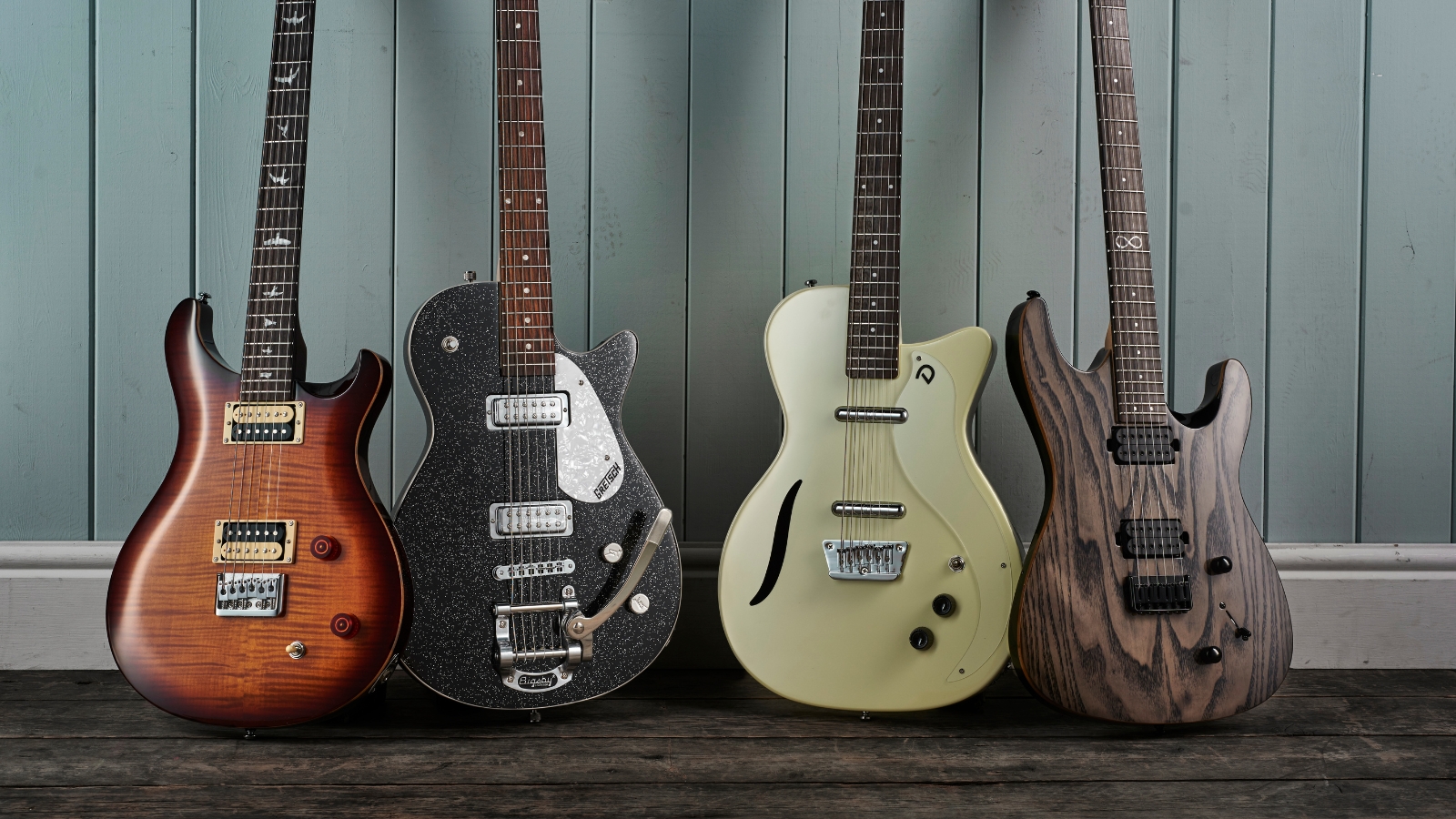
What is the best length for a baritone guitar?
Scale length is an important factor in all guitars, affecting the playability and determining just how low you can go with tuning. Most baritone guitars sit somewhere between a 27-inch and 30-inch scale length. Of course, the larger the scale length, the more spaced out the frets are, which also affects the playability of the instrument, particularly important to note if you’ve got small hands.
If you’re looking to drop-tune your instrument to the regions of G or F#, then a longer scale length means you won’t have to put such heavy gauge strings on, as it will retain a better string tension. If you’re more of the vintage baritone player, then a shorter scale length might suit you better, allowing for lighter strings whilst still unlocking that booming baritone voice.
Are baritone guitars harder to play?
When we got our first baritone guitar, we almost sent it back such was the shock at how different it felt initially. The frets were further apart than we were used to, making chords that were a breeze to us on the regular guitar a lot more difficult to play. Our hands got tired during fast playing as they were having to work harder and certain stretches were suddenly nigh on impossible.
So yes, baritone guitars are harder to play. But don’t let that stop you from getting one. Once we got over the initial adjustment period we found that playing a baritone has made us a better guitarist overall. Once you’ve played a baritone for a while, going back to a regular-sized guitar makes it feel like a toy! Your hands will be flying across the fretboard and you’ll wonder how you ever thought that regular six-string was difficult to play.
How are baritone guitars tuned?
A baritone guitar typically comes a perfect fourth lower than a regular guitar, which is B E A D F# B. However there’s nothing to stop you from going down to a perfect fifth, i.e. A D G C E A, or even going up to the major third which is C F Bb Eb G C - as famously used by Queens of the Stone Age.
In modern metal, guitarists are tuning as low as F and E standard with longer scale baritones, and with the right string gauge on your baritone it's pretty easy to hit these lows yourself.
Can baritone guitars be tuned to standard?
Yes, you can, but you’ll need some serious setup work and a light set of strings to make it work. If you’re not familiar with guitar setups, then we’d highly recommend taking it to a proper guitar tech or luthier to have your instrument set up if you’re going this route. The Buckethead Les Paul famously featured a 27-inch scale length but was tuned to standard, improving the intonation of chords and offering a unique timbre compared to the regular 24.75” scale LP.
How we test
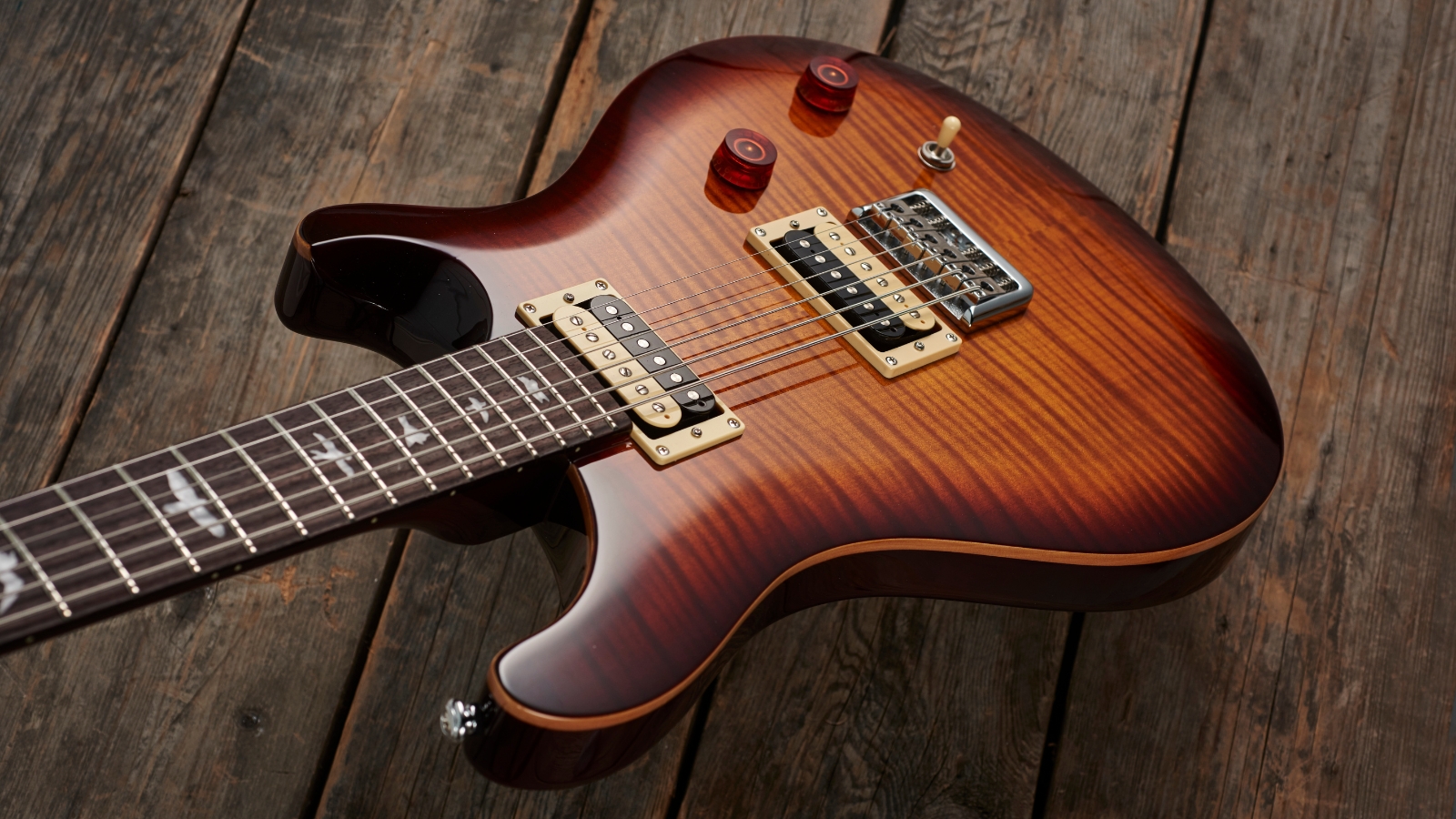
At Guitar World, our team of seasoned musicians has extensive experience playing and testing various guitar products, including many baritone guitars. As passionate guitar enthusiasts, we understand the importance of achieving the right sound and tone, and we draw on our knowledge gained from using these products in live performances, studio recordings, and rehearsals to identify the best products for our guides.
To create our list of top baritone guitars, we use a combination of practical experience, user reviews, and in-depth discussions with our editorial team to reach a consensus. We evaluate factors such as pricing, features, ease of use, and durability to ensure that we showcase the best baritone guitars currently available.
As guitar players ourselves, we appreciate the value of having the right equipment to deliver a memorable performance. Thus, we are committed to providing reliable and knowledgeable recommendations to help guitar players find the perfect product to suit their specific needs and preferences. Our ultimate aim is to help empower guitar players to unlock their full potential with the best gear on the market.
Find out more about how we make our recommendations and how we test each of the products in our buyer's guides.
Related buyer's guides
- Get heavy with the best metal amps
- The best tremolo pedals will get you that surf sound
- Add some girth with the best octave pedals
- Practice quietly with the best headphone amps for guitar
- Improve your sound with the best combo amps
All the latest guitar news, interviews, lessons, reviews, deals and more, direct to your inbox!

Matt is a Junior Deals Writer here at Guitar World. He regularly tests and reviews music gear with a focus on guitars, amps, pedals, modelers, and pretty much anything else guitar-related. Matt worked in music retail for 5 years at Dawsons Music and Northwest Guitars and has written for various music sites including MusicRadar, Guitar Player, Guitar.com, Ultimate Guitar, and Thomann’s t.blog. A regularly gigging guitarist with over 20 years of experience playing live and writing and recording in bands, he's performed everything from jazz to djent, gigging all over the country in more dingy venues than you can shake a drop-tuned guitar at.
